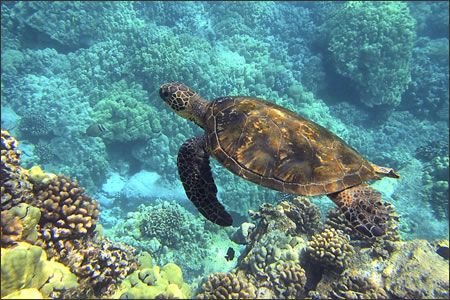Hawaii has just become the first state to pass a bill banning the sale of sunscreen products that contain oxybenzone and octinoxate. Does this mean that in order to save coral reefs and the beautiful marine ecosystem that we must endanger ourselves to the harmful UV rays of the sun and accept a greater risk of developing skin cancer? Of course not. There are reef-safe alternatives that we can adopt anywhere, not just the Aloha State.
What did Hawaii do?
On May 1st, 2018, Hawaii passed a bill that bans the sale of sunscreen products that contain chemicals that are harmful to coral reefs and the marine ecosystem.
Why ban sunscreen?
Sunscreen products contain the chemicals oxybenzone and octinoxate which scientist have found cause coral bleaching. When people apply sunscreen and then go into the water, the sunscreen is washed away in the ocean and finds its way to the coral reefs. Annually, it is estimated that 14,000 tons of sunscreen ends up in the ocean.
What is coral bleaching?
Coral bleaching is the term given to the process in which coral loses its color and becomes white. Technically, when corals are stressed due to changes in their living conditions, they expel the symbiotic algae that lives in coral tissue. This changes the color of the coral, but more importantly the stressed coral is damaged. If the stress is not severe, the coral can recover. However, if the stress is severe and the algae loss is prolonged and significant, the coral slowly dies.
What happens when coral dies?
When coral dies four things happen, all bad. First, the beautiful colors of the coral are lost. What was once a natural wonder and driver of tourism now becomes a much less compelling sight to see. Second, worms and sponges invade and make a new home out of the dead coral. Though good for worms and sponges, this is not something that tourists would particularly want to see. Third, the coral reef becomes very fragile and honeycombed. This makes it increasingly susceptible to damage and displacement by storms. Fourth, and perhaps most important, the biodiverse coral reef ecosystem becomes a dead reef. This means that the reef can no longer support fish and other animals that depend upon live coral.
What can you do?
For starters, you can abide by the law. Don’t sell sunscreen that contains oxybenzone and octinoxate. Though use of sunscreen with these chemicals is not illegal, you can support this legislation by using reef-safe alternatives.
What are reef-safe alternatives?
Reef-safe alternatives come in two forms. First, there are reef-safe sunscreen products that use zinc oxide and titanium dioxide and are the most environmentally friendly. And second, if you really want to protect the environment and your skin, invest in good sunwear and sun accessories. Wearing UPF clothing such as sun shirts, sun sleeves (arms and calves), and sun hats protects you and the environment and enables you to greatly reduce the amount of sunscreen that you need to wear and that gets deposited in coral reefs.
Summary
Hawaii has just passed legislation banning sunscreens with oxybenzone and octinoxate and it is expected that states within the US as well as other countries will follow suit. This should not be a cause for concern, but rather an opportunity to think differently and more holistically about sun-safety alternatives and to consider changes in behavior. We have options. We can better protect ourselves and the environment. There is no need to wait for more laws!
Uvoider Sun Protection Products
UV Arm Sleeves
UV Calf Sleeves
UV All-Purpose Bucket Hats
UV Explorer Hats
UV Trekker Caps
UV Cycling Caps
UV Bandana Skull Caps
UV Multifunctional Full Headwear
UV Multifunctional Half Headwear

